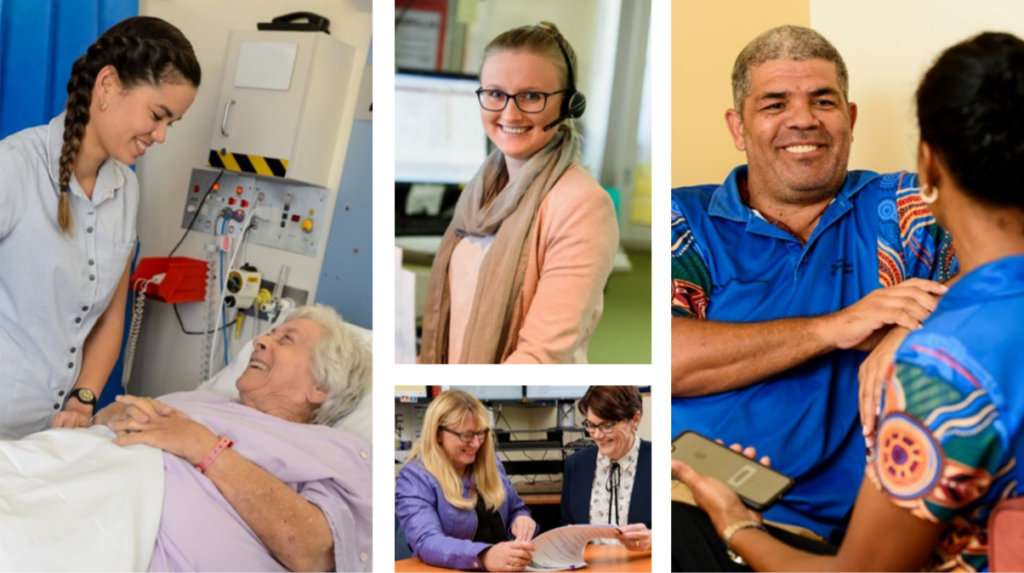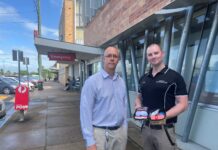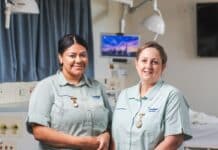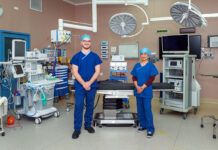Wide Bay Hospital and Health Service has demonstrated its ongoing commitment to safety and accountability, with its latest Quality of Care Report highlighting a range of indicators that continue to meet and exceed state and national benchmarks.
The 2017-18 Quality of Care Report is WBHHS’s fourth publication of its kind, and forms part of its commitment to increase community awareness, strengthen health service accountability and drive quality improvement.
The latest report – which has been expanded to include extra measures and incorporate anecdotal evidence – details the standard of care provided to patients across a number of performance and quality measures, providing transparent results against Queensland or national standards.
Among the highlights are significant reductions in pressure injuries, healthcare-associated infections and hospital-standardised mortality ratios – which is a comparison between the expected in-hospital deaths and the actual number of deaths, based on the patient population characteristics.
Pressure injury incidents have reduced to 0.001%, well below the 0.04% Queensland Health benchmark, while healthcare-associated infections have fallen to 0.45 per 10,000 patient days and mortality ratios have dropped to 0.36 per 10,000 bed days – both well within the Queensland Health benchmark of 2.0 for each category.

The report also showcases WBHHS’s continued excellence in waiting times for elective surgery and specialist outpatient appointments, with virtually no patient waiting longer than clinically recommended.
“The Quality of Care Report is all about giving our patients and community confidence in the safety and quality of healthcare services that they use every day of the year,” Wide Bay Hospital and Health Board Chair Peta Jamieson said.
“When it comes to important patient safety indicators such as pressure injury incidents and healthcare-associated infections, not only are our teams well within Queensland Health benchmarks, but continue to exceed our own, more ambitious, targets each year.
“That means patients can have great confidence in the care they receive from WBHHS clinicians and staff each and every day.”
Commitment to accountability
Ms Jamieson said the report underlined WBHHS’s commitment to being accountable to its community through open communication and transparency about the standard of care being provided to patients.
“The Quality of Care Report isn’t something we’re legislatively required to publish, but it’s part of our commitment to being open with and accountable to the community we serve, ,” Ms Jamieson said.
“The report shows what we’re doing well and acknowledges areas where we can improve, as well as what steps we’re taking to address them.”
“All this information helps people to better understand how we’re performing and make informed decisions about their own health care.”
WBHHS Chief Executive Adrian Pennington said the report did not only provide data, but also shared information on other important achievements, such as an enhanced focus on community and consumer engagement or steps being taken to nurture the development of a local medical workforce.
“This Quality of Care Report is further proof of WBHHS’s ongoing commitment to continuous improvement,” Mr Pennington said.
“Our waiting time performance continues to be excellent, with the report displaying our outstanding performance for elective surgery and specialist outpatients across all categories.
“Despite increased numbers and complexity of patient presentations, our emergency departments continue to meet their benchmarks for Emergency Length of Stay in categories 1 and 2.”
But Mr Pennington said the report was about more than just the data, and showcased a number of other important steps forward.
“This could be the way we’re improving how we incorporate community members into our decision making, whether through our new Community Reference Group in Agnes Water or our much-expanded community representative network across the region,” he said.
“It could be our expansion of our celebrated Tele-Chemo program to virtually all our rural facilities, enabling more eligible rural patients to have chemotherapy at their home hospital.
“Or it could be a variety of enhanced training and development programs that help to grow our own junior and senior nurses, doctors and other health professionals, allowing us to have a more stable local workforce and provide better continuity of care for our community.
“All these things add up to high-quality care and good patient outcomes.
“We’re proud to be transparent about our successes and about what we need to improve, because we’re committed to doing the necessary work to improve and to be accountable to the community we serve.”
Contributed







